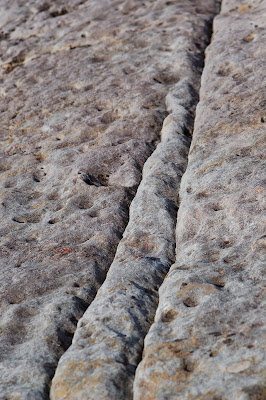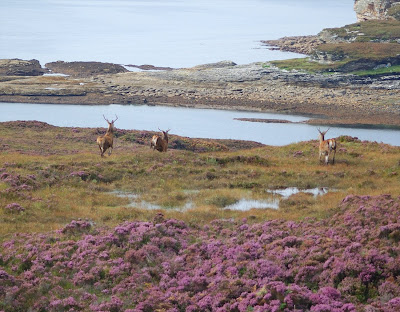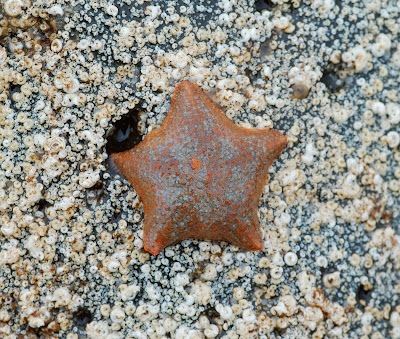Limestone pavements are uncommon in the UK, especially so in Scotland. The most extensive limestone pavement with the greatest diversity of plants in Scotland is the Strathaird region of Skye. The grey limestone here is of the Cambro–Ordovician Durness type.
Limestone pavement is formed by the gradual corrosion of exposed limestone by rain-water (limestone is composed mainly of calcium carbonate (CaCO3) which is water-soluble) leaving slabs of rock called 'clints' divided by deep fissures called 'grikes'.






Small ponds had formed at places on the limestone surface and that is where I found this very plump toad.
 |
| Common Toad (Bufo bufo) |
I disturbed a group of young Red Deer stags (Cervus elaphus) that were resting in a hollow. Neither the deer nor I knew of each other's presence until we were within 3 metres of each other and then we both got a terrible fright! I was momentarily worried that the startled deer would stampede toward me, as they are pretty large animals, but after a few confused steps they turned and ran up the hillside with great haste.
Herds of cattle also wander freely around Elgol and I took care to put as much distance between myself and the resident bull as humanly possible.
This cushion-star (Asterina gibbosa) is a scavenger and predator of molluscs, worms and brittlestars, but will also consume decaying seaweeds. These animals are protandrous hermaphrodites: they begin life as males and eventually become females as they mature.








No comments:
Post a Comment